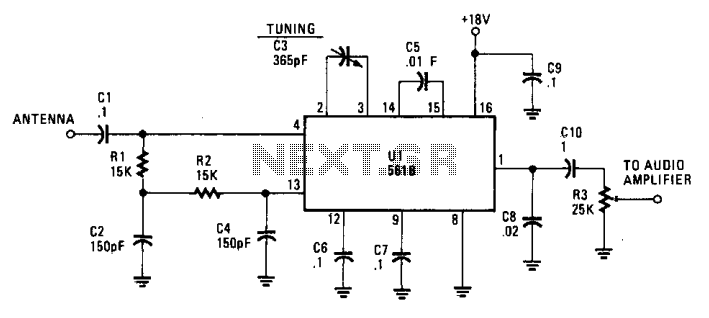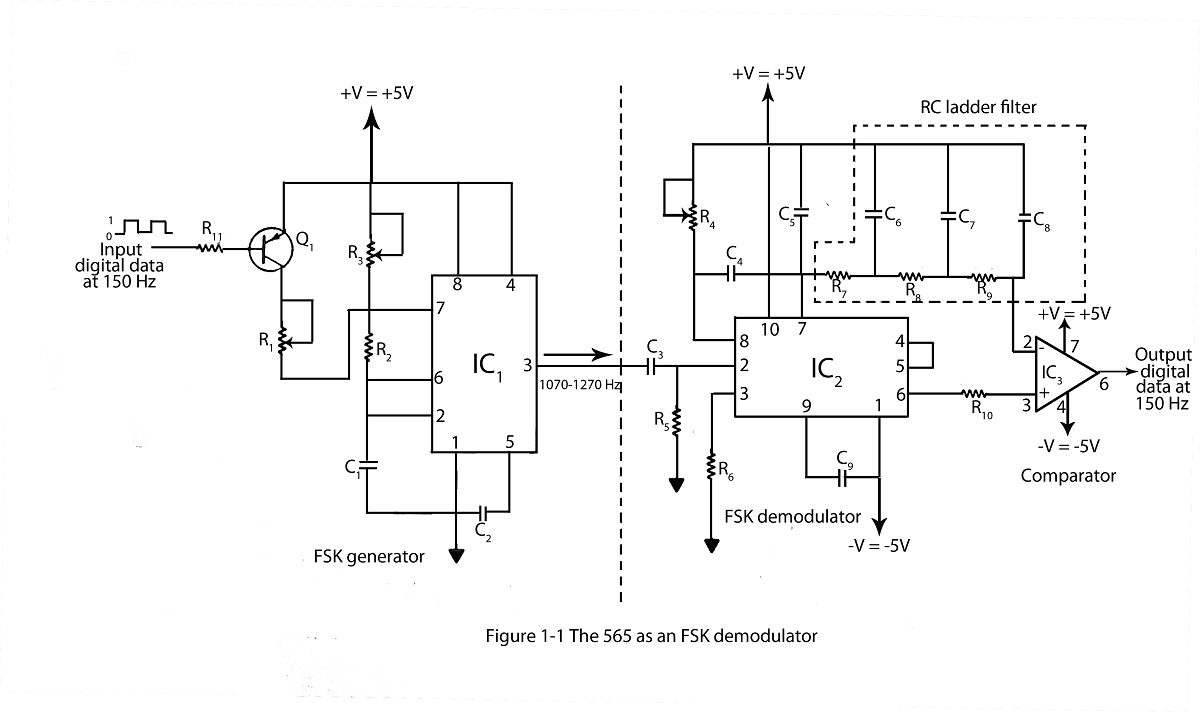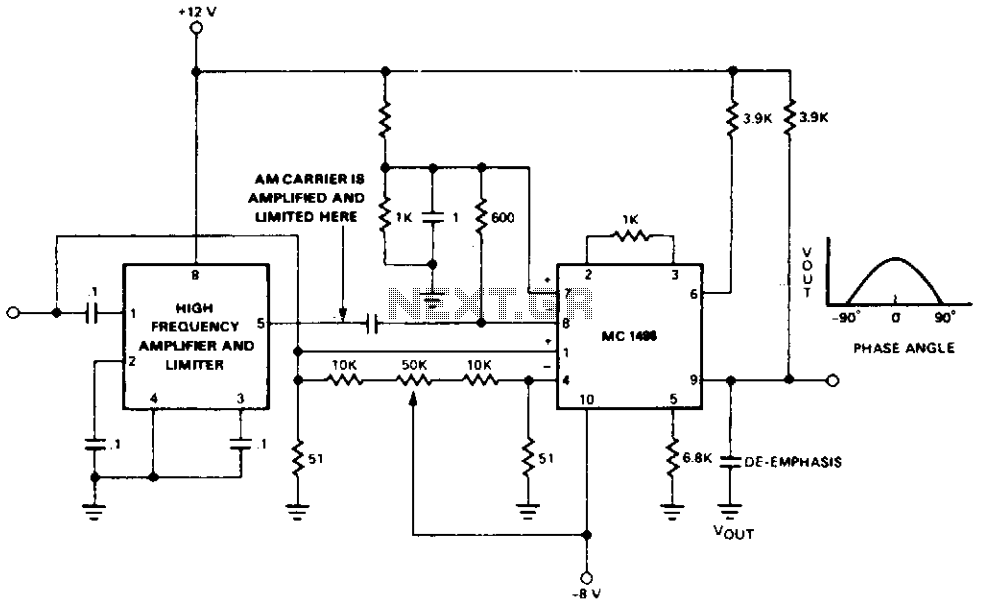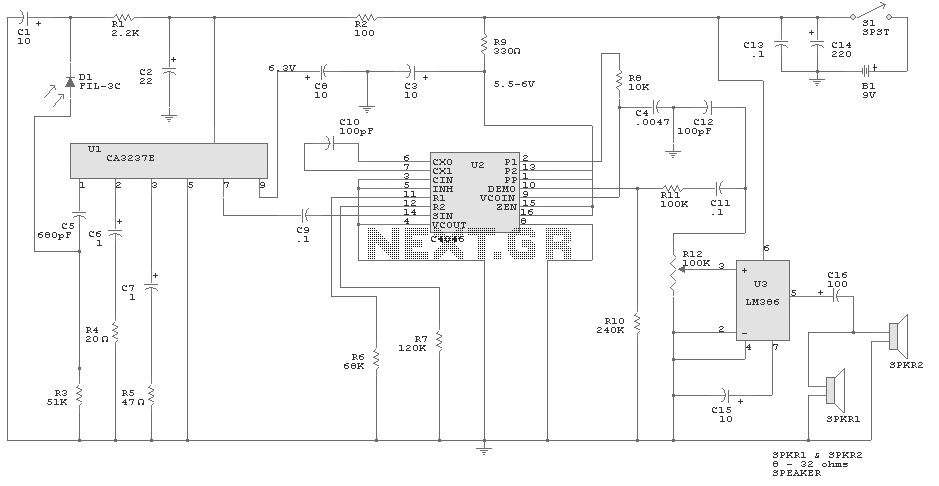
PLL FM demodulator 4046
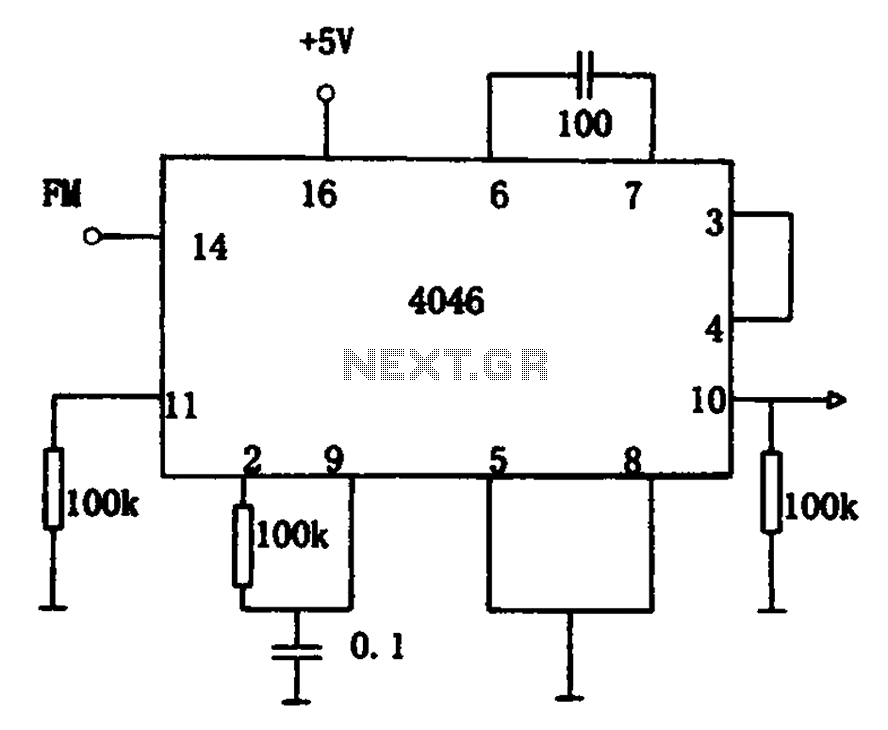
The circuit utilizes the 4046 Phase-Locked Loop (PLL) for FM demodulation, incorporating an intermediate frequency (IF) FM demodulation output based on the input signal frequency.
The 4046 PLL is a versatile integrated circuit that can be configured for various applications, including FM demodulation. In this circuit, the device operates by locking onto the frequency of the input FM signal and extracting the modulating information contained within it. The PLL consists of two main components: a voltage-controlled oscillator (VCO) and a phase comparator.
The operation begins with the incoming FM signal being fed into the phase comparator. This comparator compares the phase of the incoming signal with the phase of the VCO output. When a phase difference is detected, the phase comparator generates an error voltage that adjusts the frequency of the VCO. This feedback loop continues until the VCO output frequency matches the frequency of the input signal, effectively locking onto it.
The output of the VCO is then filtered to obtain the demodulated baseband signal. This signal represents the original information that was encoded onto the carrier wave of the FM signal. Additional circuitry, such as low-pass filters, may be implemented to further refine the output and remove any high-frequency components that are not part of the original signal.
In practical applications, the 4046 PLL FM demodulation circuit can be used in various communication systems, including radio receivers and data transmission systems, where accurate demodulation of frequency-modulated signals is required. Proper design considerations, such as component selection and layout, are essential to ensure optimal performance and minimize noise and distortion in the demodulated output. Circuit is shown using the 4046 PLL FM demodulation circuit device comprising, IF FM demodulation circuit output by the input signal frequency signal.
The 4046 PLL is a versatile integrated circuit that can be configured for various applications, including FM demodulation. In this circuit, the device operates by locking onto the frequency of the input FM signal and extracting the modulating information contained within it. The PLL consists of two main components: a voltage-controlled oscillator (VCO) and a phase comparator.
The operation begins with the incoming FM signal being fed into the phase comparator. This comparator compares the phase of the incoming signal with the phase of the VCO output. When a phase difference is detected, the phase comparator generates an error voltage that adjusts the frequency of the VCO. This feedback loop continues until the VCO output frequency matches the frequency of the input signal, effectively locking onto it.
The output of the VCO is then filtered to obtain the demodulated baseband signal. This signal represents the original information that was encoded onto the carrier wave of the FM signal. Additional circuitry, such as low-pass filters, may be implemented to further refine the output and remove any high-frequency components that are not part of the original signal.
In practical applications, the 4046 PLL FM demodulation circuit can be used in various communication systems, including radio receivers and data transmission systems, where accurate demodulation of frequency-modulated signals is required. Proper design considerations, such as component selection and layout, are essential to ensure optimal performance and minimize noise and distortion in the demodulated output. Circuit is shown using the 4046 PLL FM demodulation circuit device comprising, IF FM demodulation circuit output by the input signal frequency signal.
